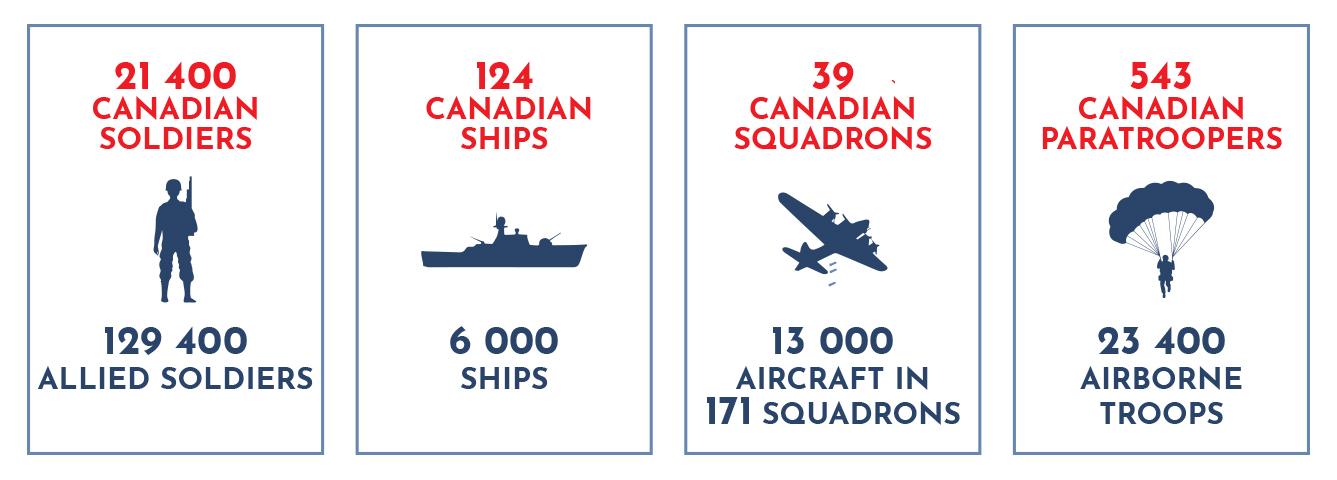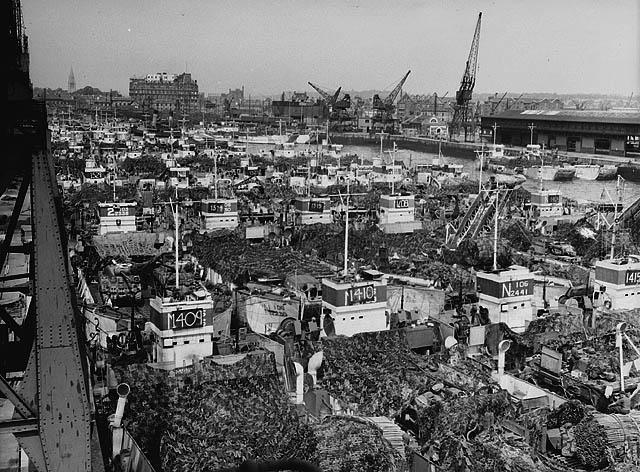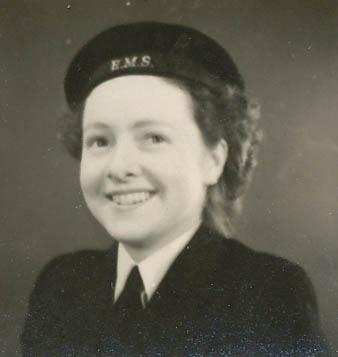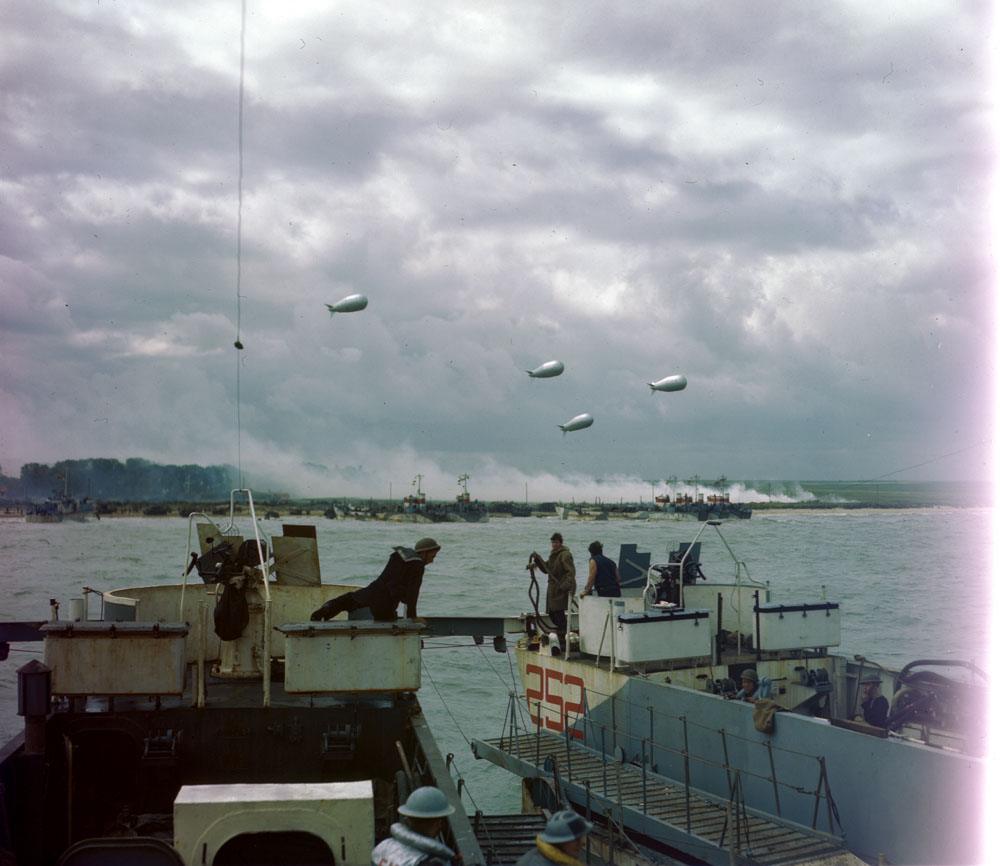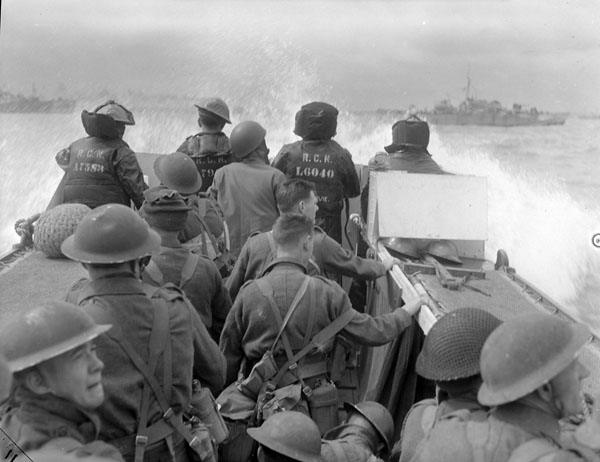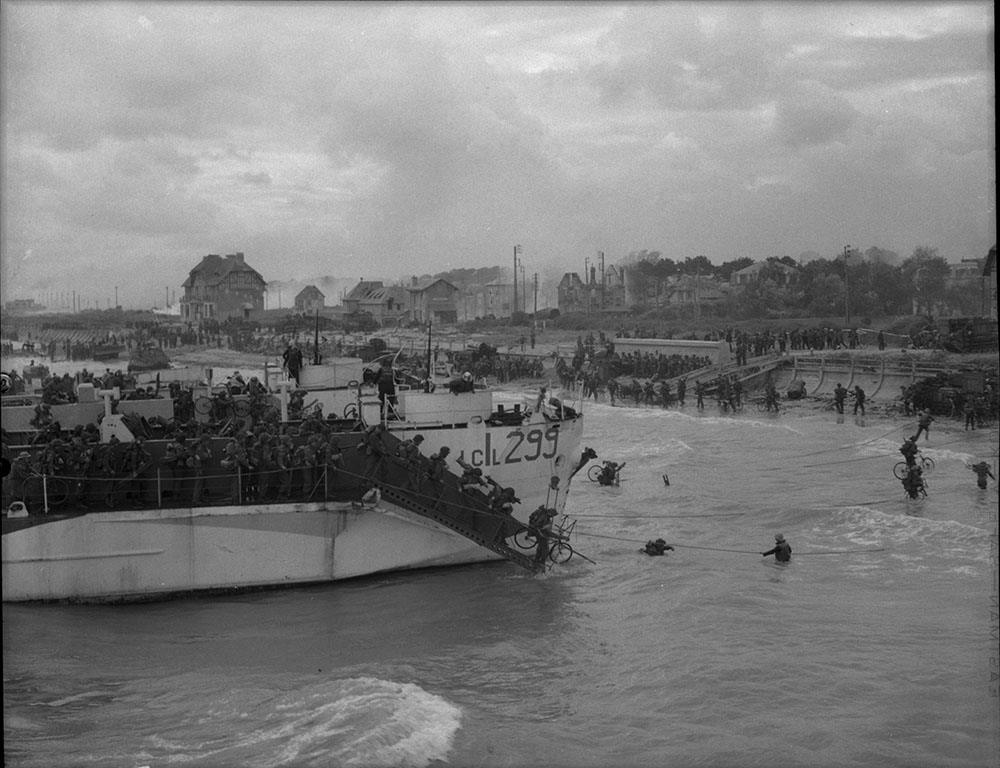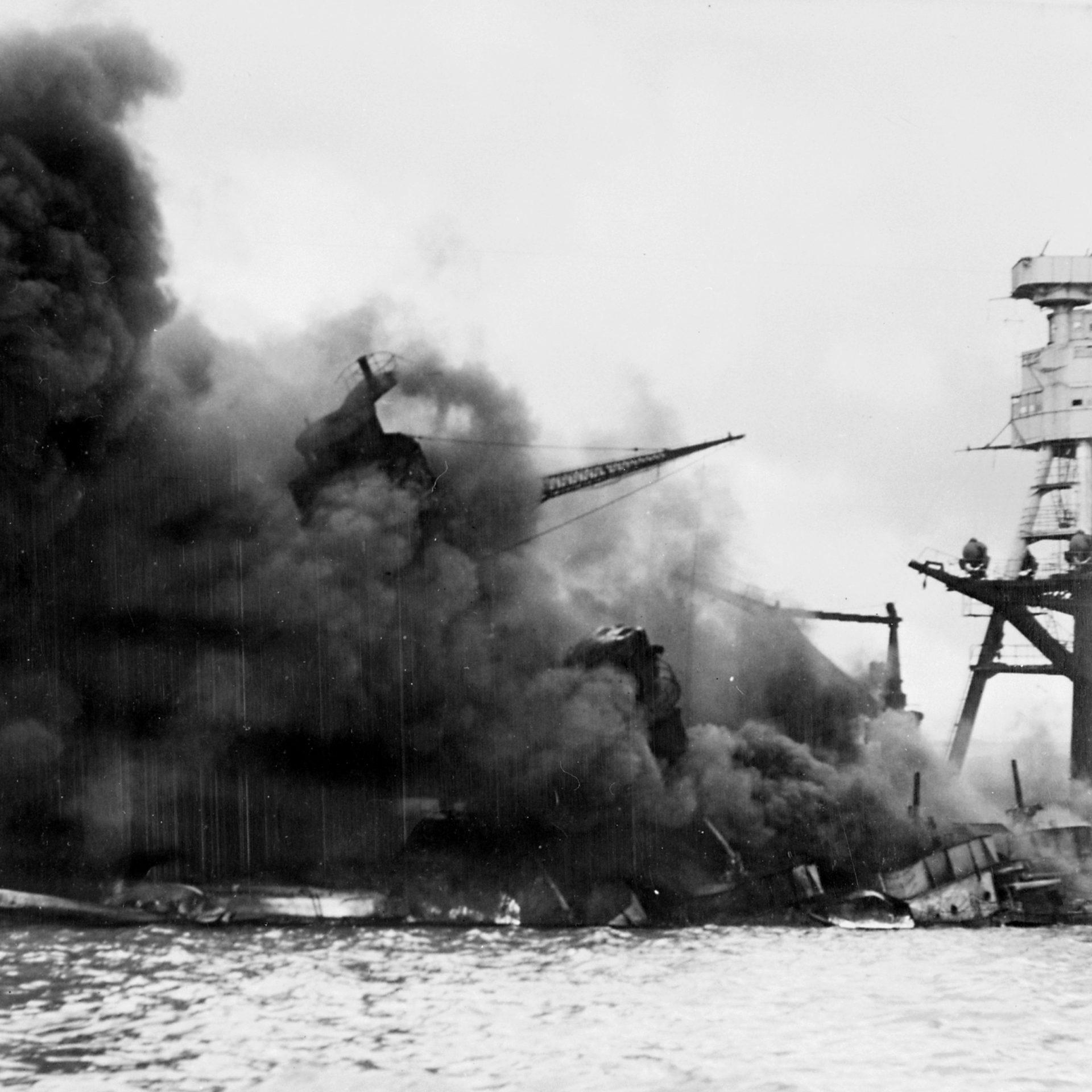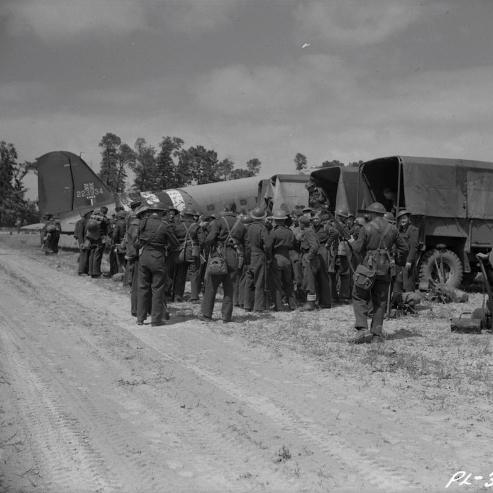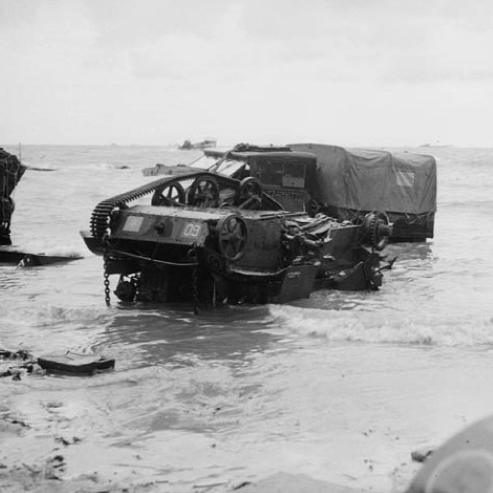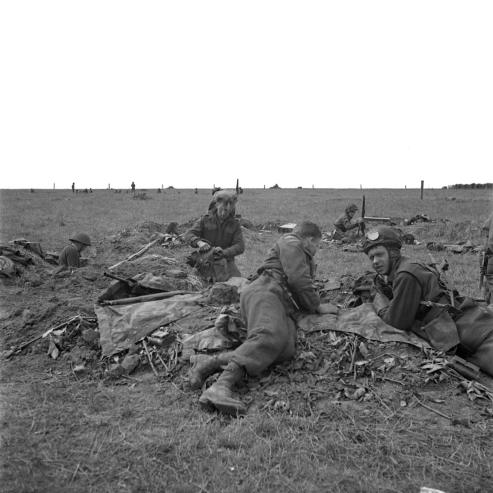THE LANDINGS
THE PLAN
After successes in North Africa, Italy and Stalingrad, the Allies focused on liberating France, which was considered a critical stage in the Nazi defeat. The plan for a Normandy landing was approved a the Quebec Conference in August 1943.
Nearly a year later, in June 1944, the Normandy landings marked the beginning of the war’s end. “Operation Overlord” encompassed a massive air, navy and armoured-vehicle assault on the German defences.
Canadian soldiers played an important role alongside the American and British troops. Their landing on Juno Beach was a major event in Canadian history in terms of its scale and military importance.
“It was the greatest event in the history of our lifetimes, there’s no doubt about that. And there will probably never be anything like that again. When you consider D-Day, it was the greatest armada in the history of mankind. Going over to Normandy. […] On the early hours of 6 June, I was on duty and I heard this roar of planes going over. I looked up in the sky and it was dozens of planes towing gliders. So obviously D-Day had begun.”
– Roy Halford, soldier of the Royal Berkshire Regiment, Courtesy of Historica Canada
